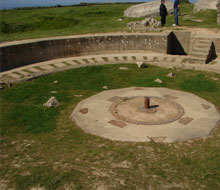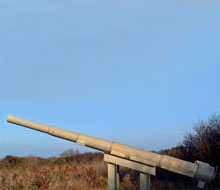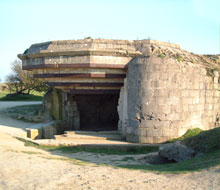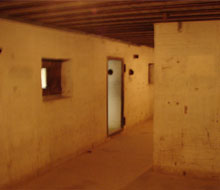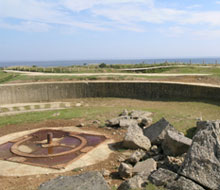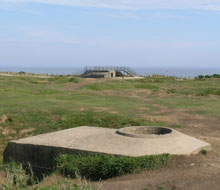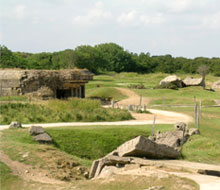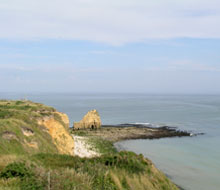American Cemetery, more
Pointe du Hoc

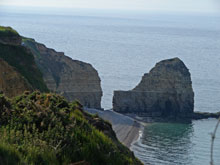
Pointe du Hoc, Cricqueville
To reach the Pointe du Hoc Ranger Monument, now maintained by the American Battle Monuments Commission, follow the direction signs west along D 514 to the car park outside the monument (6 m).
The Pointe du Hoc today retains much of its battlefield character because of the destruction left by the rain of bombs and shells the Allies unleashed to neutralize this rocky point. The much feared battery was bombed three times before D-Day, then hit from the air again that morning. 600 tones of bombs were dropped. The battleships Texas and Arkansas battered the area with their 14- and 12-inch guns just after dawn. The destroyer Satterlee saturated the position with her 5-inch guns in direct support of the Rangers.
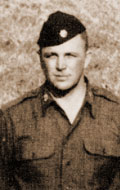
Col. James Earle Rudder.
This concentration of fire left craters and ruined casemates which over sixty years have yet to erase. From the barbed-wire fence along the cliff top, you can look down the hundred-foot cliff to the east beach where three companies of the 2d Ranger Battalion, commanded by Lieutenant Colonel James E. Rudder, landed on D Day. Their mission was to scale the cliff, then silence the six 155-mm GPF thought to threaten the landing operations on both American beaches.
Rangers were 40 minutes late
The Rangers came in forty minutes late in ten LCA's, trailed by four DUKW's and two supply boats. They lost one of each boat type on the run in. The LCA's were equipped with rocket-propelled grappling hooks which were fired as the boats grounded under the cliff. Despite small-arms fire, improvised mines, and grenades lobbed from above, the Rangers used their rope and aluminum ladders to scale the cliff within five minutes of landing. Ironically, they found the casemates empty of guns, which days before had been displaced further inland. Later that morning, a patrol found the 155s unguarded and spiked them. Colonel Rudder then set up a defensive perimeter and waited for reinforcements. «Located Pointe du Hoc», he managed to signal V Corps that afternoon, «mission accomplished need ammunition and reinforcement many casualties». Those reinforcements were to have come from Rangers of the 2d and 5th battalions waiting offshore.
Because Rudder's assault was late, the Rangers went to their next mission and landed on Omaha Beach. It took them two days to fight their way overland to Rudder's relief.
By then, his force had been reduced to about ninety effectives. Rudder received the Distinguished Service Cross for continuing to lead his men, although twice wounded. The monument, standing on a German blockhouse which you cannot enter, consists of a rough granite obelisk flanked by tablets inscribed in French and English.
«Rangers lead the way»
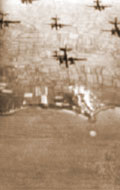
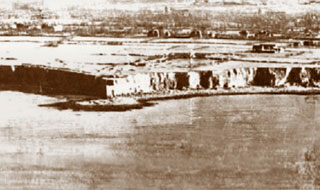
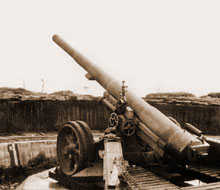
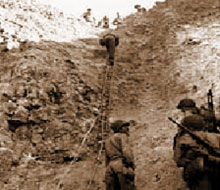
Pointe du Hoc walking tour
Legend:
1- First German attack
2- Second German attack
3- 3.00 pm attack
4- 23.00 pm and 01.00 am attack
5- Open gun emplacements
6- Casemates
7- Command Post
8- Anti-aircraft
E 861 to F 883- Rangers' LCA
